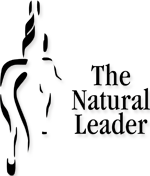 From our place the view of the mountains is spectacular, some days it feels like you could touch them.
From our place the view of the mountains is spectacular, some days it feels like you could touch them.
We live on the eastern slopes of the Rockies, the point where the foothills turns into the flat lands. With it’s ready made windbreak of poplars, spruce and caragana hedge an old farmstead became our home. I often say there is nothing to block the view–a statement that translates to nothing to stop the wind. The wind can be relentless.
In the still of a spring evening bird song and frogs are the main chorus but as you move toward the herd the steady slap of the tail and stomp of feet means mosquitoes have arrived. After 11 years I realize there is a darn good side to that ever present wind. Between hill and sky, there can be a LOT of water. So when the wind blows it provides that point in the day you can focus and the horse can relax, the wind offers relief.
The Natural Leader programs are designed to provide a different perspective on leading self or others. I have to admit sometimes the questions that come forward catch me off guard, one did just that in a recent session. The individual was wondering what to do when all else appeared to be stacked against them. The first question that came to mind to begin the dialogue was “Is there another way you could look at the problem?”
We often have participants who are looking for a fix, that one idea that will transform their leadership journey. The horses provide that different perspective on how they show up as individuals and the expectations they place on self. If the horses had taught me nothing else, the one learning horses are brilliant at sharing. You can only control and change how you respond and react to see a different outcome.
The same question came to mind as I headed down the road, glad for the reprieve from mosquitos the wind offered. When I could see the benefit the wind offered rather than loath it, I loved it. “It was the question that was needing to be asked but was waiting to be said.”
Not sure why it’s taken me so long to find the upside of the wind. I guess needing to see something from a different perspective is something you never run out of.
—–
In full disclosure, that is not a picture from where I sit, but a view not too far to the west of us.





